
How to Use 12v 4000mAH: Examples, Pinouts, and Specs
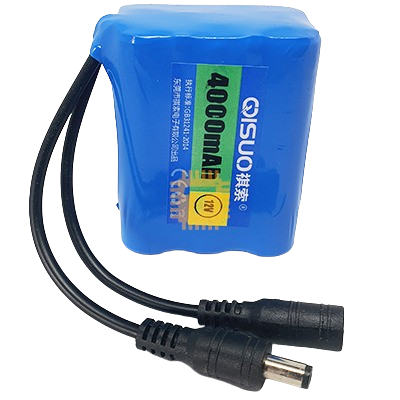
 Design with 12v 4000mAH in Cirkit Designer
Design with 12v 4000mAH in Cirkit DesignerIntroduction
The 12V 4000mAh rechargeable battery pack is a versatile power source designed to provide a stable 12 volts of electrical potential with a capacity of 4000 milliamp hours (mAh). This battery pack is ideal for powering a wide range of electronic devices, including robotics, portable electronics, IoT devices, and small-scale renewable energy systems. Its rechargeable nature makes it an eco-friendly and cost-effective solution for long-term use.
Explore Projects Built with 12v 4000mAH
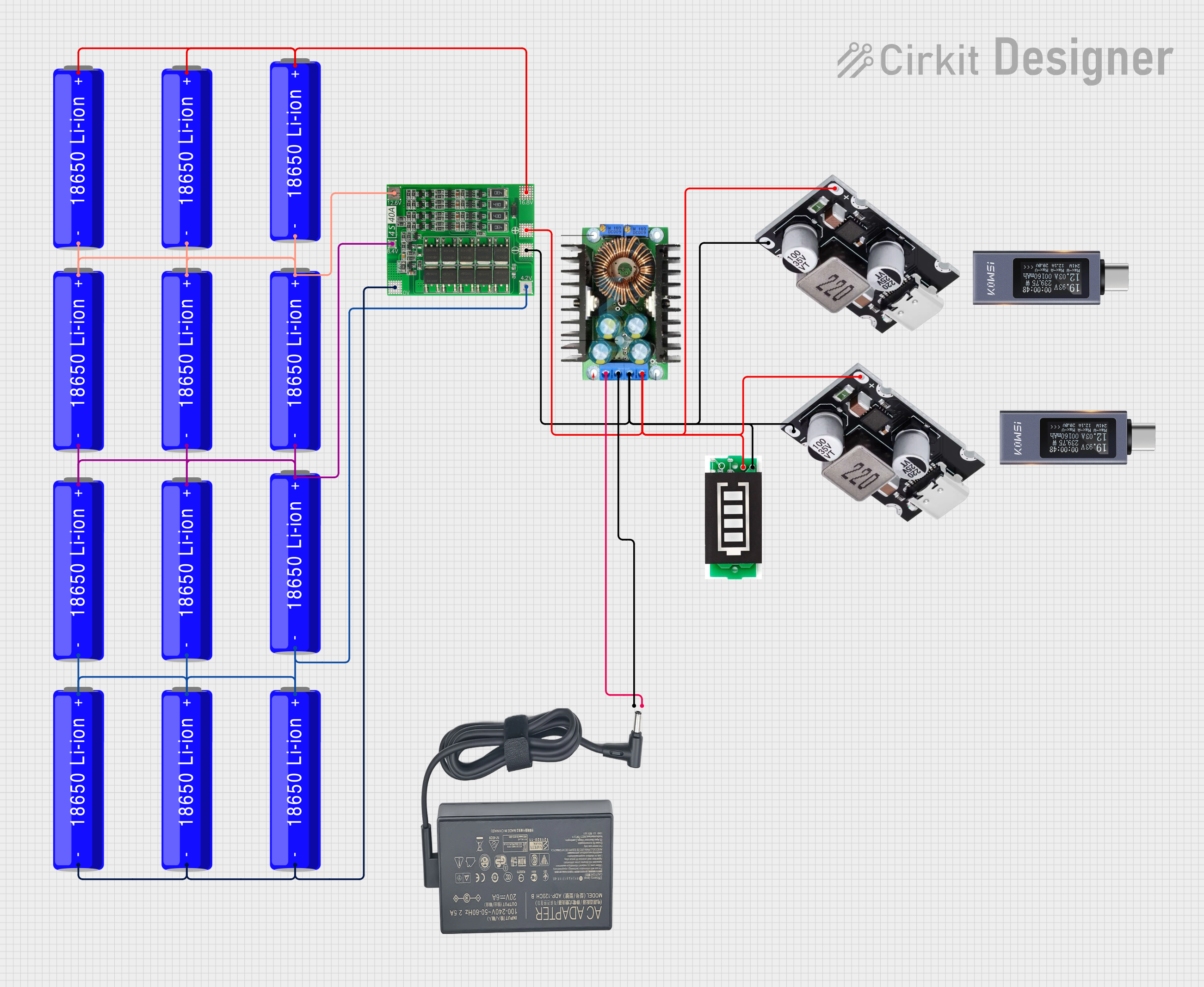
 Open Project in Cirkit Designer
Open Project in Cirkit Designer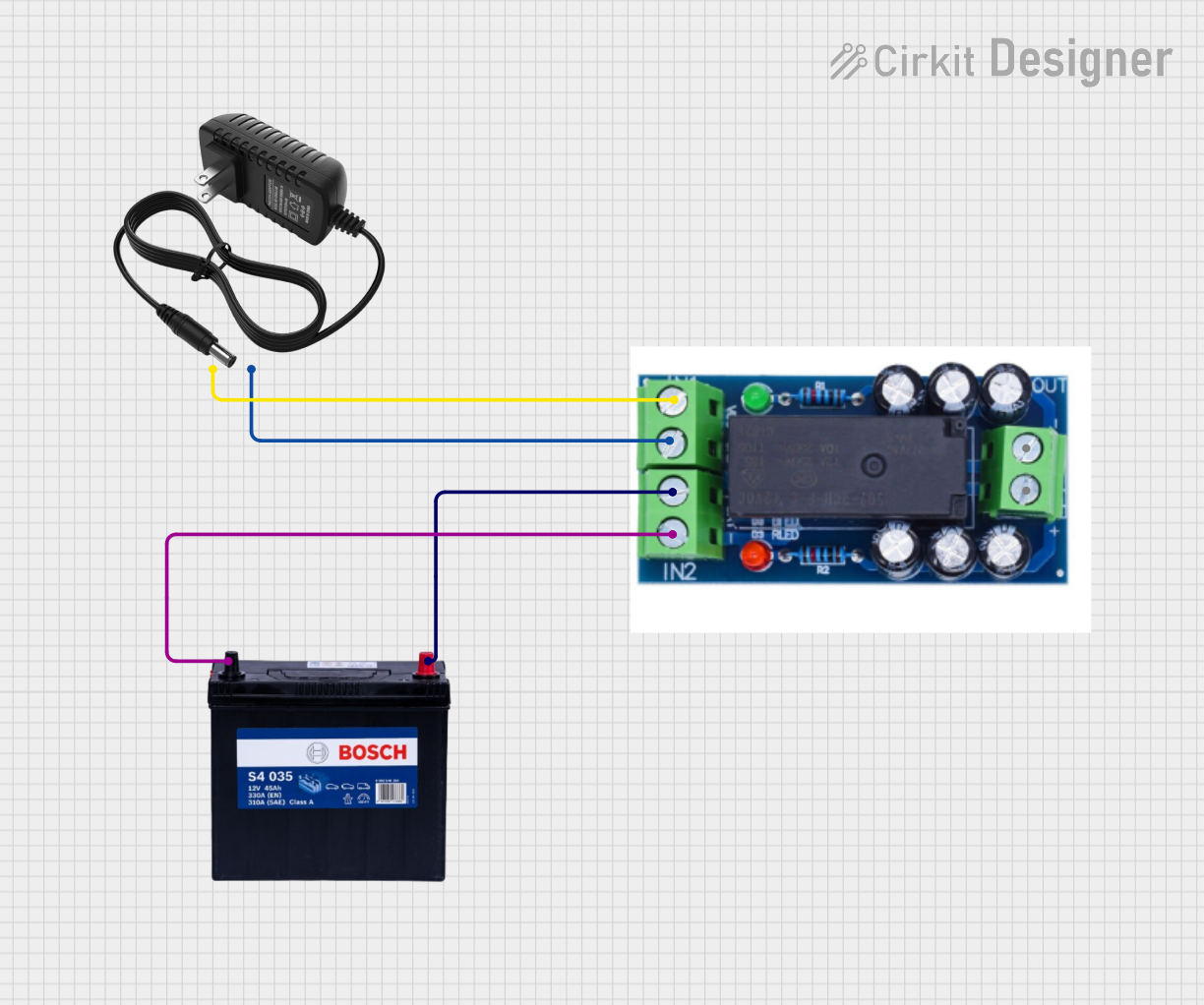
 Open Project in Cirkit Designer
Open Project in Cirkit Designer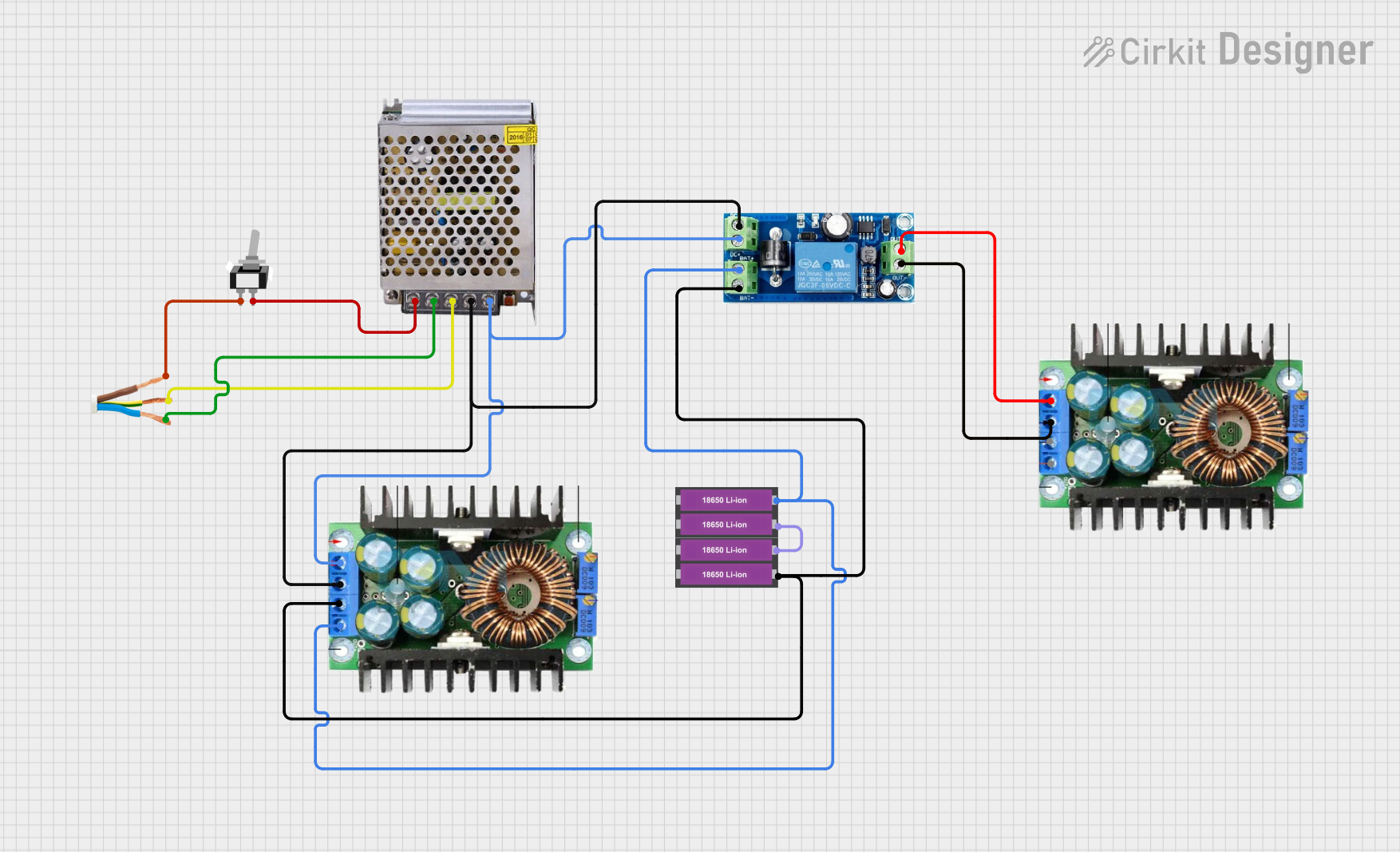
 Open Project in Cirkit Designer
Open Project in Cirkit Designer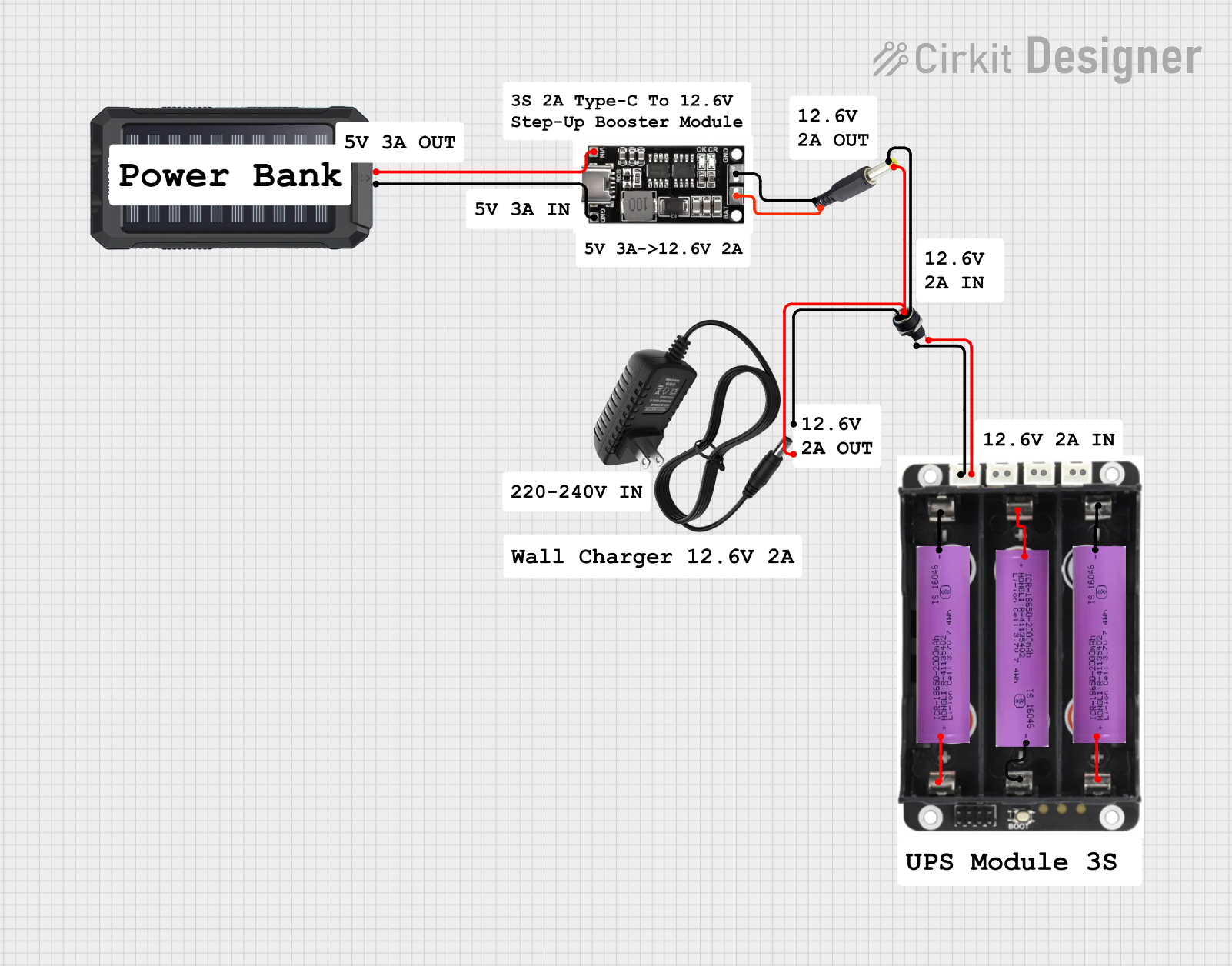
 Open Project in Cirkit Designer
Open Project in Cirkit DesignerExplore Projects Built with 12v 4000mAH

 Open Project in Cirkit Designer
Open Project in Cirkit Designer
 Open Project in Cirkit Designer
Open Project in Cirkit Designer
 Open Project in Cirkit Designer
Open Project in Cirkit Designer
 Open Project in Cirkit Designer
Open Project in Cirkit DesignerCommon Applications and Use Cases
- Powering Arduino-based projects and microcontroller circuits
- Robotics and motorized systems
- Backup power for small electronic devices
- Portable lighting systems
- Renewable energy storage (e.g., solar-powered setups)
Technical Specifications
The following table outlines the key technical details of the 12V 4000mAh battery pack:
| Specification | Details |
|---|---|
| Nominal Voltage | 12V |
| Capacity | 4000mAh (4Ah) |
| Chemistry | Lithium-ion or Lithium-polymer |
| Maximum Discharge Current | Typically 2C (8A) |
| Charging Voltage | 12.6V (for lithium-based batteries) |
| Charging Current | Recommended: 0.5C (2A) |
| Dimensions | Varies by manufacturer |
| Weight | Varies by manufacturer |
| Connector Type | Commonly XT60, JST, or barrel jack |
| Cycle Life | ~300-500 cycles (varies by usage) |
Pin Configuration and Descriptions
The battery pack typically has two main terminals or wires for connection:
| Pin/Terminal | Description |
|---|---|
| Positive (+) | Supplies the positive 12V output |
| Negative (-) | Supplies the ground (0V) connection |
Some battery packs may also include a third wire for battery management system (BMS) monitoring or balancing.
Usage Instructions
How to Use the Component in a Circuit
- Connection: Connect the positive terminal of the battery pack to the positive rail of your circuit and the negative terminal to the ground rail. Ensure proper polarity to avoid damage to your components.
- Charging: Use a compatible charger designed for 12V lithium-ion or lithium-polymer batteries. Ensure the charger provides a constant current/constant voltage (CC/CV) charging profile.
- Load Considerations: Ensure the total current draw of your circuit does not exceed the maximum discharge current of the battery pack (typically 8A for a 2C-rated pack).
- Protection: Use a fuse or current-limiting resistor to protect the battery and circuit from overcurrent conditions.
Important Considerations and Best Practices
- Avoid Overcharging: Do not exceed the recommended charging voltage of 12.6V to prevent damage or safety hazards.
- Avoid Deep Discharge: Do not allow the battery voltage to drop below 9V, as this can permanently damage the cells.
- Temperature: Operate the battery within the recommended temperature range (typically 0°C to 45°C for charging and -20°C to 60°C for discharging).
- Storage: Store the battery at ~50% charge in a cool, dry place if not in use for extended periods.
- Safety: Avoid puncturing, short-circuiting, or exposing the battery to water or fire.
Example: Using the Battery Pack with an Arduino UNO
Below is an example of how to connect the 12V 4000mAh battery pack to an Arduino UNO using a voltage regulator to step down the voltage to 5V:
Circuit Diagram
- Connect the positive terminal of the battery to the input of a 7805 voltage regulator.
- Connect the output of the 7805 regulator to the 5V pin of the Arduino UNO.
- Connect the negative terminal of the battery to the GND pin of the Arduino UNO.
Sample Code
// Example code for Arduino UNO powered by a 12V 4000mAh battery pack
// This code blinks an LED connected to pin 13
void setup() {
pinMode(13, OUTPUT); // Set pin 13 as an output for the LED
}
void loop() {
digitalWrite(13, HIGH); // Turn the LED on
delay(1000); // Wait for 1 second
digitalWrite(13, LOW); // Turn the LED off
delay(1000); // Wait for 1 second
}
Troubleshooting and FAQs
Common Issues Users Might Face
Battery Not Charging:
- Cause: Incorrect charger or damaged battery.
- Solution: Verify the charger specifications and ensure it matches the battery's requirements. Check for physical damage to the battery.
Battery Drains Quickly:
- Cause: Excessive current draw or aging battery.
- Solution: Reduce the load on the battery or replace it if it has reached the end of its cycle life.
Circuit Not Powering On:
- Cause: Incorrect wiring or insufficient voltage.
- Solution: Double-check the connections and ensure the battery is fully charged.
Battery Overheating:
- Cause: Overcurrent or faulty battery management system (BMS).
- Solution: Reduce the load or replace the battery if the BMS is malfunctioning.
Solutions and Tips for Troubleshooting
- Use a multimeter to measure the battery voltage and verify it is within the expected range.
- Inspect all connections for loose wires or incorrect polarity.
- If the battery is not charging, test the charger with another battery to rule out charger issues.
- For long-term storage, charge the battery to ~50% capacity to maintain its health.
By following these guidelines and best practices, you can ensure safe and efficient use of the 12V 4000mAh battery pack in your projects.